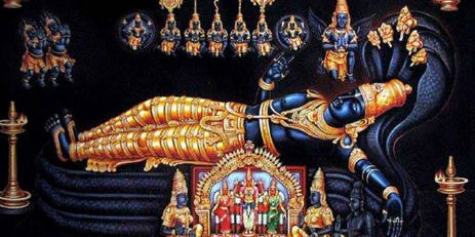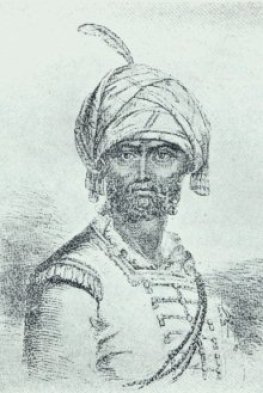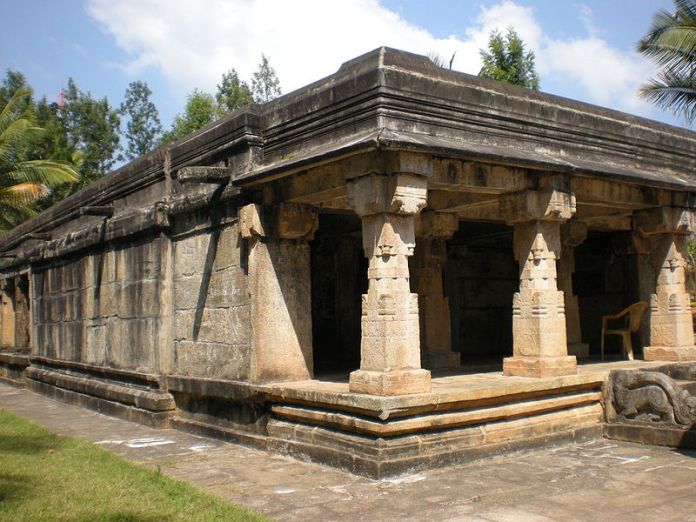Kerala additionally kenned as Keralam, is a state in Dakshin Bharat with constant presence in the history of Bharat with its unique cultural heritage and as a defender of Hindus during sundry incursions. The Cheras are believed to be the first kings to have ruled over Kerala though frequently struggling to keep power by withstanding perpetual attacks from their neighboring kings like Cholas, Pandyas etc., The state despite of keeping every invading forces in check and staying as the sole propagator of dharma when moslem forces assailed the land of Tamizhagam before the establishment and after the fall of Vijayangara empire, lost its cultural and spiritual heritage after the Mysore invasion of Malabar. Many temples of south India were attacked by moslems as a result of which the local hindus took the utsava murtis of various temples to different parts of Kerala until the invaders were subjugated by Kottayam Kerala Varma near Thiruvattar, Kanyakumari.

In the 15th century after the state was divided into three major kingdoms, the advent of Portugese traders followed by Vasco Da Gama led to the commencement of the European efforts of colonization of India. The Kings and masses of the state, always being the greatest defenders of dharma, kept the anti-dharmic forces in check for the next two centuries.

The Samuthiri (Zamorin) of Kozhikode permitted the incipient Portugese visitors to trade with his subjects as a result of which Portugese trade in Kozhikode prospered with the establishment of a factory and a fort. However, Portuguese attacks on properties in his jurisdiction instigated the Samuthiri and led to conflicts between them. The Portuguese capitalized on the rivalry between the Samuthiri and the King of Kochi allied with Kochi. When Franciso De Almeida was appointed as Viceroy of Portuguese India in 1505, his headquarters was established at Fort Kochi(Fort Emmanuel) rather than in Kozhikode. During his reign, the Portuguese managed to dominate relations with Kochi and established a few fortresses on the Malabar coast. However, the Portuguese suffered setbacks from attacks by Samuthiri forces; especially from naval attacks under the leadership of Kozhikode admirals known as Kunjali Marakkars, which compelled them to seek a treaty. In 1571, the Portuguese were vanquished by the Samuthiri’s forces in the battle at Chaliyam fort.
As a result, the Portuguese were ousted by the Dutch East India Company, who during the conflicts between the Kozhikode and Kochi kings, gained control of the trade. The Dutch in turn were emasculated by constant battles with Anizham Thirunal Marthanda Varma of Travancore, and were subjugated at the Battle of Kulachchal in 1741. An acquiescent, known as Treaty of Mavelikkara, was signed by the Dutch and Travancore in 1753, according to which the Dutch were compelled to move away from all political involvements in the region, thus ending their rule in India effectively. Marthanda Varma annexed northern kingdoms through military conquests, resulting in the rise of Travancore to a position of ascendence in Kerala and uniting it as a single state so that it can be well equipped to tackle foreign invasions in future.
However, the invasions of Hyder Ali and his son Tipu sultan, transmuted the dharmic nature of Kerala weakening it both economically and spiritually. When news of Hyder Ali’s conquest of Kingdom of Bidanur reached Ali Rajah of Kannur in 1763, he promptly requested Hyder to invade Kerala and help him deal with Samuthiri of Kozhikode. This Muslim ruler of Kannur, was an active ally of Mysore during the years of occupation of Malabar by Mysore. In 1766, Hyder Ali marched into Malabar through Mangaluru and defeated all small kingdoms in Malabar with his modern army starting from Kolathunadu which withal resulted in the murder of innumerable number of Hindu civilians including women and children who refused to accept islam. Hyder Ali sent Brahmin messengers from Kadathanad offering pardon and mercy to all the Hindus who left the kingdom as a result of the tortures of his army on Hindus. But when the Hindus returned he ensured in hanging many of the civilians including women and children who refused from converting to islam like all other moslem tyrants of India.
After the conquest of Kadathanad, Hyder marched towards Kozhikode, the headquarters of Samuthiri. Hyder claimed that his incursion was because Samuthiri had failed to pay him the twelve lakhs as agreed in 1757. When Hyder approached Kozhikode, Samuthiri sent his kin and kith to safe-house in Ponnani and Kottakkal. Samuthiri himself was kept under house arrest, as he failed to pay Hyder’s demanded sum tribute and his finance minister was imprisoned and tortured to reveal any hidden treasures. Samuthiri was also tortured to accept islam and not permitted even to do his routine. Finally, Samuthiri dejected by the tortures of Hyder on him and his subjects, decided to set fire to the gunpowder store of his palace and thus committed suicide. Hyder Ali, with a substantial amount of money, marched south-east and moved towards Coimbatore through Palakkad. Mysore appointed Ali Rajah as Military Governor of the incipiently acquired province of Malabar.

Shortly after Ali Rajah, returned to Coimbatore, Hindus hidden in the forests rebelled against the Mysore authorities. They re-occupied forts and large portions of land in the monsoon season. However, by June 1766, Hyder Ali himself returned to Malabar and imposed his troops on the rebels, killing many and deporting over 15,000 Nairs out of which only 200 survived as the rest were killed by Mysore forces on the way in an ambush. One of the most critical battles occurred at Puttiyangadi in the Kingdom of Tanur where the Hindus suffered a consummate to vanquishment. The Mysore army stormed the village killing many Hindus including civilians and recaptured it. As a result, hundreds of rebels eluded to the forest hideouts again. After these events, an amnesty was proclaimed for the Nairs at Palakkad.

Mysore forces invaded Malabar again in 1774, concentrating on the opulent treasures of the Tranvancore. Travancore also allowed many Hindus driven away by Hyder Ali from their kingdom which made him decide to end the rule of last major free Hindu kingdom in Kerala. Hyder Ali asked the rulers of Kochi and Travancore to pay tribute as vassal states. Kochi was asked to pay a total of Rs. 4,00,000 and ten elephants, while Travancore was asked to pay Rs. 15,00,000 and thirty elephants. The Kochi royals concurred to pay the amount and accepted the superiority of Mysore whereas the royals of Travancore refused to pay the tribute which resulted in Hyder trying to launch an attack on Travancore.
After the surrender of the ruler of Kochi, Hyder Ali advanced to the Travancore Defence Lines, the Nedumkotta fortifications. Meanwhile, the Travancore Nair Army, put down an attempt by the Mysore forces to capture the Kodungallur Fort. The ruler of Kodungallur, however surrendered to Hyder Ali, though the Dutch stormed his palace and captured it in January 1778. After facing losses in Kozhikode and Palakkad, Hyder retreated to Mysore, thus ending his military campaign in Malabar. Shortly after this started the Second Anglo Mysore war, during which Hyder Ali died and after which his son Tipu Sultan became the ruler of Mysore. Thus, Hyder Ali, who is glorified as one of the greatest freedom fighters of India who fought against the British along with his son by the celebrated historians, was one of the major reasons for the economic and spiritual turmoil witnessed in Kerala for the past two centuries. We shall see about the atrocities and invasions of Tipu in Malabar in our article to follow.
Note: This article first appeared at https://paanchajanya1284.wordpress.com/2016/05/12/mysore-invasion-of-kerala-part-1-hyder-ali/ and is being republished here with the permission of the author.
Did you like this report? We’re a non-profit. Make a donation and help pay for our journalism.


🙏